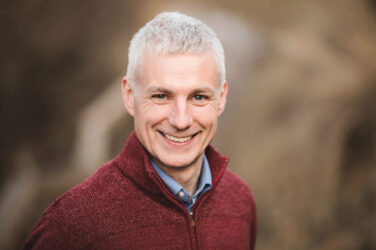
What can you tell us about yourself?
I worked for environmental groups, including Friends of the Earth Scotland, for 20 years before moving to Sweden and beginning a mid-career PhD looking at the intersections between geoengineering and environmental and social justice.
My experience at the COP climate summit in Copenhagen in 2009 had led me to believe that people would likely soon begin seriously considering geoengineering, given that many saw the summit as another blown ‘last chance’. Today I fear that geoengineering is too easily viewed as a silver bullet solution to the climate emergency – seeing it as a techno fix rather than considering the wider societal and democratic ramifications of large scale deployment.
What are you doing at Lancaster University?
I’m a research fellow at Lancaster University. My biggest research project is called ISPACE – international security politics and climate engineering – which is in partnership with a colleague who is now at the University of Leeds. The project is looking at how different groups view geoengineering, e.g. how diplomats and security experts see it, compared to how scientists and activists view it.
Why did you switch from Friends of the Earth Scotland to academia?
My switch wasn’t necessarily one that I’d planned but I was doing some consultancy work and a part-time PhD, and when the PhD ended there were some interesting research opportunities which I ended up pursuing. I’ve also been able to work on a project exploring how to stimulate better collaboration between activists and scholars.
What did you talk about at the Environmental Audit Committee yesterday?
The oral evidence session was entirely focused on what they called Negative Emissions Technologies (NETs), which I term Negative Emissions Techniques, because consideration should also be given to non-technological methods for emissions capture, such as rewilding.
The reason I was invited to give evidence was because a research project I was involved in, called AMDEG – Assessing the Mitigation Deterrence Effects of GGRs (greenhouse gas removals), sent in written evidence, and the EAC wanted someone from the project to explain our perspective to the committee. AMDEG is all about understanding how attempts to remove greenhouse gases from the atmosphere tends to lead to less effort being put into prevention of greenhouse gas emissions in the first place.
What’s your opinion on NETs? What role do you think they should play in achieving 1.5C?
NETs can only ever play a minor role, compared to accelerated emissions cuts and reduced consumption. All NETs have significant limitations. But a portfolio of NETs will be needed in the future if we are to reduce atmospheric GHG concentrations to safe levels. There was a lot of discussion about Direct Air Capture (DAC) technologies in the first of the two panels at the evidence session. I’m actually something of a DAC optimist because I don’t have much faith in BECCS (bioenergy with carbon capture and storage) which is currently very heavily replied upon in IPCC and other climate modelling in terms of pathways to 1.5C. But it will be expensive and energy-intensive so we can’t afford to rely on it too heavily.
The two key issues I see for DAC to make an effective contribution to a portfolio of NETs, are siting and incentives. DAC would need to be sited in places where there is a plentiful supply of excess zero carbon energy, e.g. curtailed offshore wind or geothermal. And the current proposed incentives are somewhat perverse for instance with captured carbon being sold into utilization for industry, which defeats the purported purpose of the technology for net removal of emissions. So there will probably need to be state intervention to support DAC, rather than relying entirely relying on carbon markets.
Please note: the views expressed in this blog are those of the contributing individual, and are not necessarily representative of the views of IEMA or any professional institutions with which IEMA is associated.
Subscribe
Subscribe to IEMA's newsletters to receive timely articles, expert opinions, event announcements, and much more, directly in your inbox.
Posted on 11th January 2022
Latest Posts
-
IA Outlook Journal Volume 21: Impact Assessment Frontiers Part 2: People, Health and Equality
- 22nd July 2024 -
IEMA responds to Carbon Border Adjustment Mechanism (CBAM) consultation - July 2024
- 19th July 2024 -
The detail and policy action required beyond the King’s Speech
- 19th July 2024 -
Energy and Housing Bills included in the King’s Speech
- 17th July 2024 -
Launch of new resource for conservation technology tools
- 11th July 2024 -
Natural Capital 101: Guide for Sustainability Professionals
- 9th July 2024